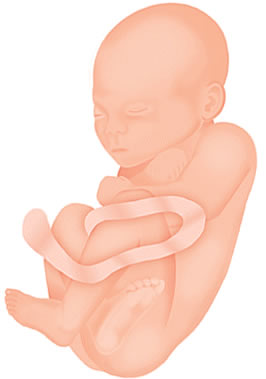Will Your Baby Pass the APGAR Tests?
 One minute, and again five minutes after your baby is born, your doctor will calculate your baby’s Apgar score to see how he/she is doing. It’s actually a simple process that helps determine whether your newborn is ready to meet the world without any further medical assistance.
This scoring system, which was developed by anesthesiologist Virginia Apgar in 1952, is now used in modern hospitals around the world and rates a baby’s appearance, pulse, responsiveness, muscle activity and breathing with a number between 0 and 2, with 2 being the strongest rating. The numbers are totaled, and 10 is considered a perfect score.
One minute, and again five minutes after your baby is born, your doctor will calculate your baby’s Apgar score to see how he/she is doing. It’s actually a simple process that helps determine whether your newborn is ready to meet the world without any further medical assistance.
This scoring system, which was developed by anesthesiologist Virginia Apgar in 1952, is now used in modern hospitals around the world and rates a baby’s appearance, pulse, responsiveness, muscle activity and breathing with a number between 0 and 2, with 2 being the strongest rating. The numbers are totaled, and 10 is considered a perfect score.
What does the APGAR score mean?
- The One Minute Apgar score: This helps your practitioner decide whether your baby needs immediate medical help. If your baby scores between 7 and 10, it usually means he/she is in good shape and doesn’t need more than routine post-delivery care. You shouldn’t be disappointed if your baby doesn’t score a perfect 10, though. It’s unusual for a baby’s hands and feet to have good color one minute or so after birth. If your baby scores between 4 and 6, he may need some help breathing. This could mean something as simple as suctioning his nostrils or massaging him, or it could mean giving him oxygen. If your baby scores 3 or less, he may need immediate lifesaving measures, such as resuscitation. Keep in mind, though, that a low score at one minute doesn’t mean that your baby won’t eventually be just fine. Sometimes babies born prematurely or delivered by cesarean section, for example, have lower-than-normal scores, especially at the one-minute testing.
- The five-minute Apgar score: This helps your practitioner see how your baby is progressing and whether he/she has responded to any initial medical intervention. A score of 7 to 10 is still considered normal at this point. If your baby scores 6 or less at the five-minute mark, he may need medical help and your practitioner will determine what steps need to be taken.
How will your doctor score your baby?
If you want to remember what gets tested during the process simply think of “Apgar”: Activity, Pulse, Grimace, Appearance, and Respiration. Here’s how they’re used to rate your baby:-
Activity: muscle tone
0 — Limp; no movement
1 — Some flexion of arms and legs
2 — Active motion
Pulse: heart rate
0 — No heart rate
1 — Fewer than 100 beats per minute
2 — 100+ beats per minute
Grimace: reflex response
0 — No response to airways being suctioned
1 — Grimace during suctioning
2 — Grimace and pull away, cough, or sneeze during suctioning
Appearance: color
0 — The baby’s whole body is completely bluish-gray or pale
1 — Good color in body with bluish hands or feet
2 — Good color all over
Respiration: breathing
0 — Not breathing
1 — Weak cry; may sound like whimpering, slow or irregular breathing
2 — Good, strong cry; normal rate and effort of breathing
APGAR Scores



